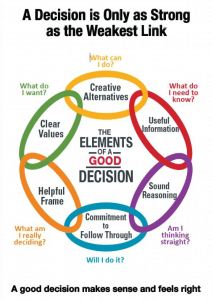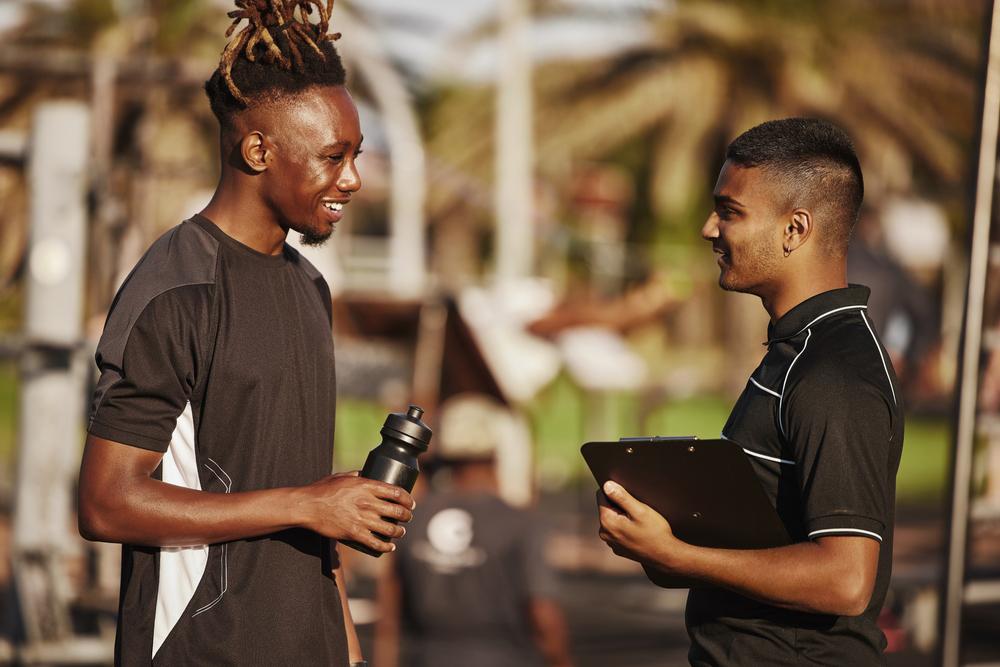Whether it’s making a decision about how to properly prepare for a competition, practice a recovery plan, or stay away from shortcuts, good decision-making, although challenging to teach, is a skill that is critical to an athlete’s success.
According to the Decision Education Foundation (DEF), which seeks to empower youth with effective decision-making skills through curriculum and courses in decision quality, teaching teenagers how to decide is more effective than teaching them what to decide. For example, the popular D.A.R.E.  campaign that was implemented in schools nationwide simply told adolescents about the negative effects of drugs and had adolescents sign a pledge to say no to drugs, but it didn’t have a significant effect on actually preventing youth from illicit drug use according to a report by the U.S. General Accounting Office.
campaign that was implemented in schools nationwide simply told adolescents about the negative effects of drugs and had adolescents sign a pledge to say no to drugs, but it didn’t have a significant effect on actually preventing youth from illicit drug use according to a report by the U.S. General Accounting Office.
Chris Spetzler, DEF Executive Director, recommends helping students understand how to make better decisions as the first step to “increasing their thoughtfulness when engaging their values, creativity, and critical thinking in making and following through on their personal choices.”
As a coach, it’s important to develop an understanding of the decision-making process, as this will better equip you to help shape the way your athletes approach decisions on the field and throughout their lives. DEF explains that there are six elements that must be considered in order to reach a quality decision, including helpful frame, clear values, creative alternatives, useful information, sound reasoning, and commitment to follow through.
Keeping in mind these six foundational elements of a good decision, here are five DEF exercises we’ve tailored for coaches to use at practice with their team to help strengthen an athlete’s decision-making skills:
Explain Decisions You’ve Made
Sharing a personal decision-making story of your own can help you build trust with your team, make you more relatable, and allow you to break down the decision-making process with them. Being able to pull from your experience and explain the rationale behind the choices you’ve made will help illustrate the six elements of good decision-making for your team.
Case Studies from Sports
Whether it’s deciding who should take the final shot of a game or how to deal the temptation of performance-enhancing drugs, sports come with a lot of decision-making opportunities.
Walking through a sports story that involves decision making is a great way to start the discussion on the topic with your team. Using case studies of athletes who have made poor choices in the past provides your team with the opportunity to dive deep and analyze the situation, reasoning, and outcome of a real decision with real consequences.
Interactive Role Play Activities
Inviting your team to participate in simulated decision-making scenarios allows them to critically think and practice the elements of good decisions in real-time.
Have your athletes act out relevant situations, such as deciding how to react to a teammate who consumes energy drinks before practice, to help them evaluate their values and learn how to make more informed decisions.
Group Projects
Breaking your athletes into groups and giving them a sport-related challenge to work through is another way you can give them hands-on decision-making experience, while also encouraging them to consider the values and logic of their teammates.
Encourage your groups to share their outcomes and explain how they reached their final decision.
Visualization
Many coaches are familiar with the practice of having athletes visualize skills or upcoming games, but you can also apply this technique to your athlete’s decision-making.
For example, practice setting a goal with your athlete and walk through the decisions they would make to reach that goal. Encourage them to visualize their future after achieving their goal and evaluate the steps they needed to take to get there. Would they be proud of the decisions they made to achieve their goal?
_____
Creating a space that encourages the development of an essential life skill like decision-making should be a top priority for the coaches of youth athletes. Continue to encourage your team to evaluate their decisions and take ownership over their actions so they can be proud of the paths they choose.



